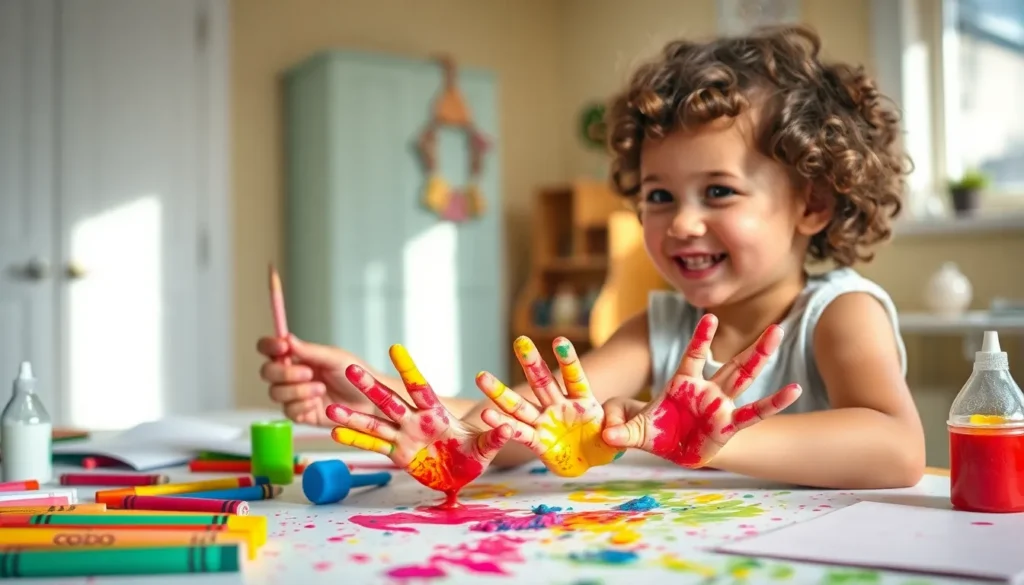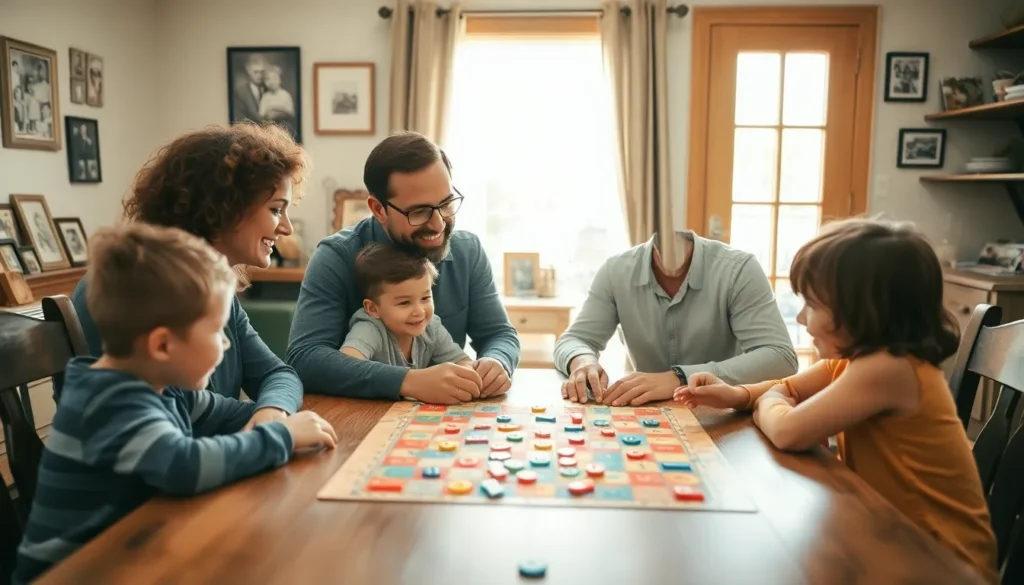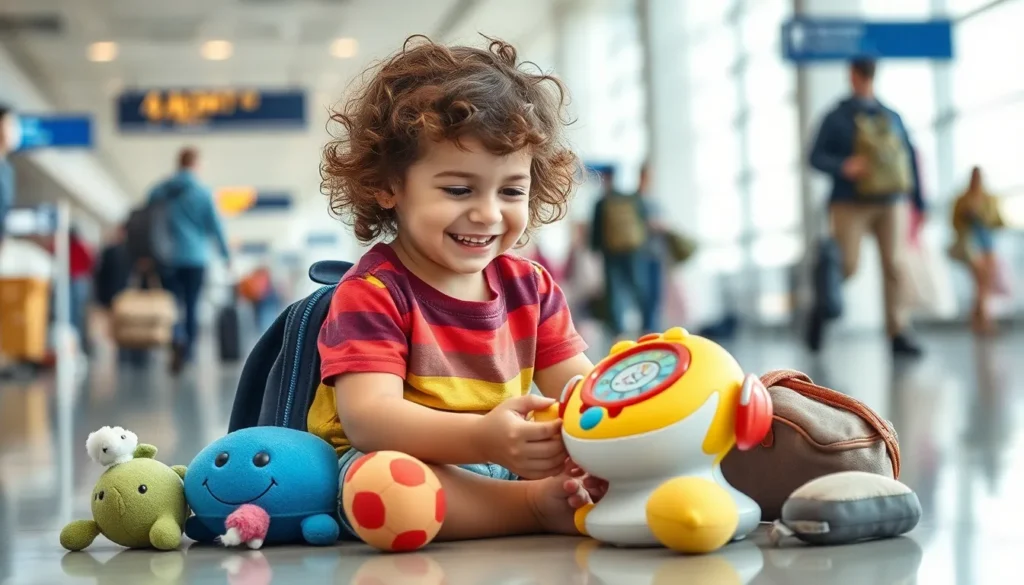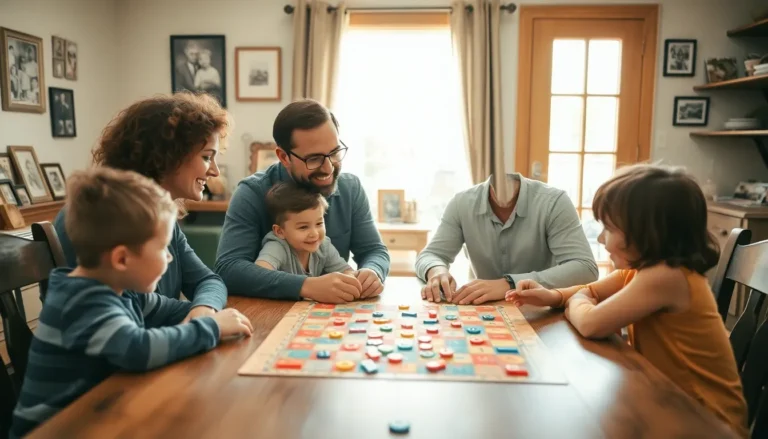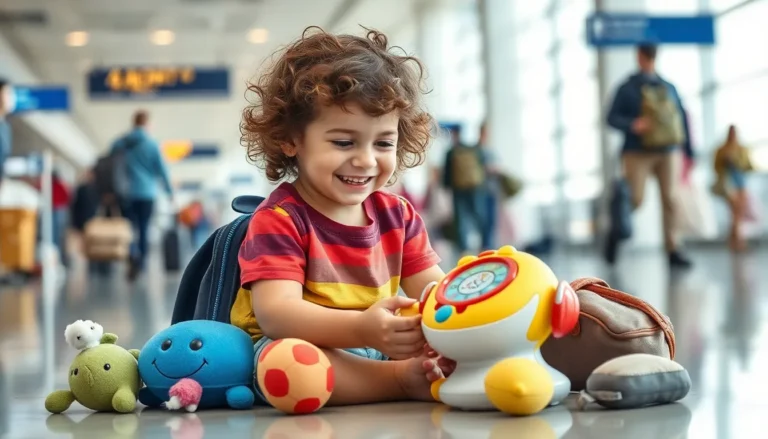Table of Contents
ToggleCrafting with toddlers can feel like a delightful whirlwind of glitter, glue, and giggles. These tiny artists bring boundless energy and creativity to every project, turning simple materials into masterpieces—or at least a colorful mess that’ll have parents chuckling. Who knew that a paper plate could transform into an alien spaceship or a masterpiece of modern art?
Engaging in toddler crafts not only sparks imagination but also builds essential skills. From fine motor development to color recognition, these playful activities pack a punch of learning disguised as fun. So grab those crayons and let the chaos begin! With a sprinkle of patience and a dash of humor, parents can create unforgettable moments while nurturing their little one’s creativity. Dive into the world of toddler crafts, where every project is a new adventure waiting to unfold.
What Are Toddler Crafts?
Toddler crafts refer to creative activities designed for young children, typically aged 1 to 4 years. These projects often use simple materials found at home or in nature, including paper, crayons, glue, and recyclable items. Engaging in these crafts allows toddlers to explore their creativity and express themselves through art.
Some examples of toddler crafts include finger painting, using stickers, and creating collages. Each activity encourages imaginative thinking, helping toddlers learn about colors and textures. Crafting provides an opportunity for hands-on learning, where they can manipulate objects and refine fine motor skills.
Many types of materials enhance toddler crafts. Paper products, such as construction paper or old magazines, make for excellent collage materials. Household items like empty containers can transform into various shapes and characters. Natural items, such as leaves or pinecones, inspire connections with nature.
In addition, toddler crafts promote cognitive development. As they experiment with different colors and shapes, children develop critical thinking skills. Social interaction often occurs during group crafting sessions, fostering teamwork and communication. These experiences build confidence, as toddlers gain pride in their creations.
Parents play a crucial role in guiding these crafting experiences. They can introduce new techniques and provide support while allowing children to explore independently. Sharing in the crafting process creates lasting memories and strengthens the parent-child bond.
Benefits of Toddler Crafts
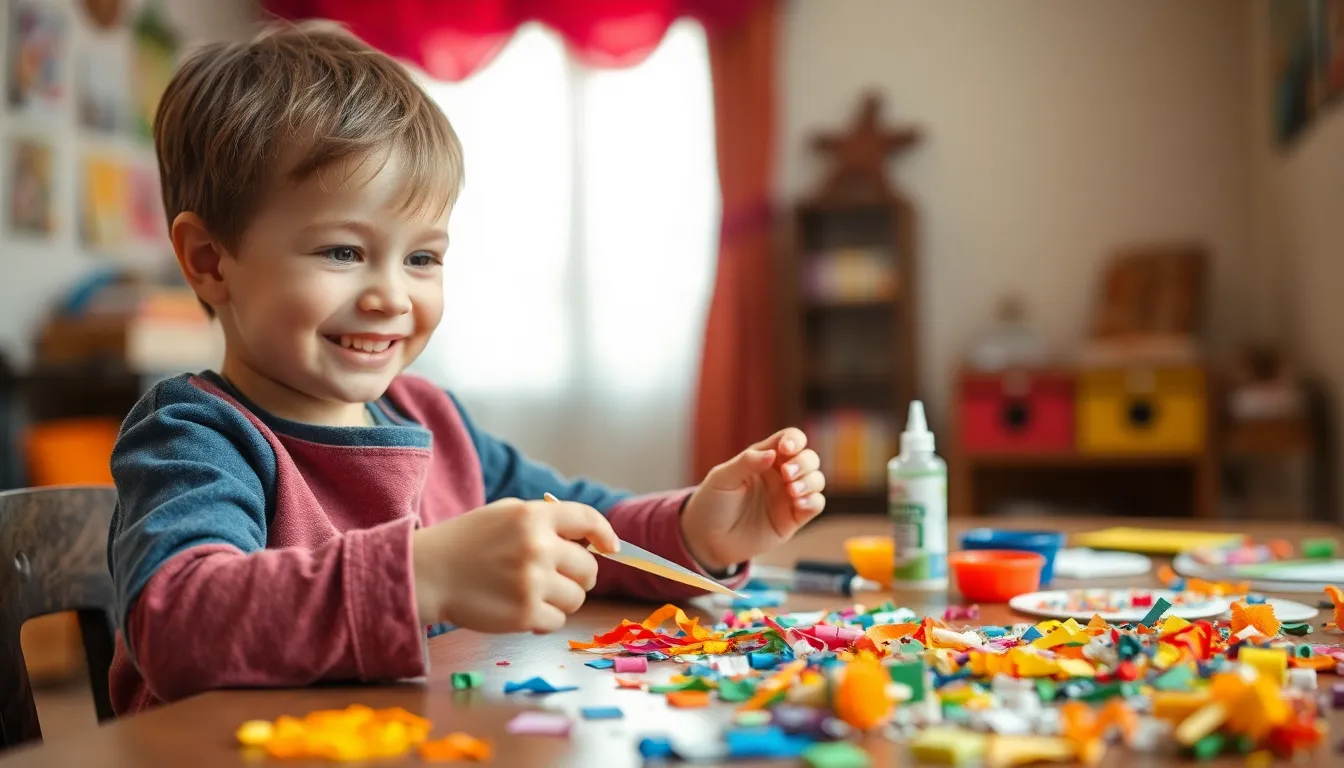
Toddler crafts offer numerous advantages for early childhood development. Engaging in these activities fosters creativity while enhancing essential skills.
Cognitive Development
Cognitive skills advance through crafting by encouraging toddlers to think critically. Creating art helps them solve problems, such as how to make materials stick together or what colors to use. Exposure to various textures, shapes, and colors stimulates sensory exploration, enriching toddlers’ understanding of their environment. When children follow instructions or work on guided projects, they enhance their ability to focus and pay attention. Engaging in discussions about their crafts fosters language development, allowing toddlers to express their thoughts and ideas with increasing clarity.
Motor Skills Improvement
Motor skills improve through hands-on crafting activities. Grasping crayons, scissors, or glue encourages toddlers to strengthen their hand muscles. As they manipulate materials, coordination and control develop naturally. Cutting shapes, tearing paper, or applying glue promotes dexterity, critical for future tasks such as writing. Participation in group crafts allows toddlers to learn teamwork and share tools, further refining their social and motor skills. Each craft provides opportunities to practice fine motor movements, essential for overall physical development.
Types of Toddler Crafts
Toddler crafts encompass a variety of styles. Parents can explore different project types tailored to their child’s interests and developmental stages.
Creative Art Projects
Creative art projects allow toddlers to express themselves freely. Examples include finger painting, collage making, and drawing with crayons. Clay modeling provides a tactile experience, enhancing fine motor skills. Adding glitter or stickers makes each project unique and sparks imagination. These activities cultivate artistic confidence and encourage children to experiment with colors and textures.
Nature-Inspired Crafts
Nature-inspired crafts utilize elements found outdoors. Leaves, twigs, and flowers transform into beautiful art pieces. A simple activity could involve leaf rubbings using crayons, allowing children to explore textures. Collecting stones invites creative painting, turning each one into a whimsical character. Incorporating natural materials provides learning opportunities about the environment while promoting sensory exploration.
Seasonal and Holiday Crafts
Seasonal and holiday crafts celebrate various times of the year. Toddlers can create ornaments for Christmas or make cards for Valentine’s Day. Crafting pumpkin decorations in autumn teaches children about different seasons. December-themed projects might include snowflakes made from paper. Engaging in these activities brings families together and fosters a sense of tradition and joy throughout the year.
Tips for Successful Toddler Crafting
Crafting with toddlers can be rewarding and enjoyable. Keeping certain tips in mind enhances the experience.
Choosing Age-Appropriate Materials
Selecting materials suitable for toddlers ensures a safe and engaging crafting experience. Use non-toxic crayons, water-based paints, and safe scissors designed for small hands. Incorporating recyclable items, such as cardboard boxes and egg cartons, encourages creativity while being budget-friendly. Avoid small objects that can pose a choking hazard. Combining different textures, like cotton balls and sandpaper, stimulates sensory exploration. Emphasizing simplicity allows toddlers to grasp concepts easily. Including vibrant colors keeps their attention and inspires imagination during the craft.
Setting Up a Craft Space
Having a designated craft space promotes focus and organization. Choose a flat surface, such as a table or mat, where toddlers can sit comfortably. Covering surfaces with newspaper or a plastic sheet simplifies cleanup. Arranging supplies within reach fosters independence and exploration. Including containers or bins helps keep materials organized, minimizing distractions. Displaying completed crafts encourages toddlers to take pride in their creations. Ensuring good lighting enhances visibility and makes crafting enjoyable. Restrictions on noise levels and distractions can help maintain focus during crafting sessions.
Crafting with toddlers opens a world of creativity and learning. These activities not only spark imagination but also support essential developmental skills. By embracing the delightful messiness of crafting, parents can create cherished memories while nurturing their child’s growth.
The variety of projects available ensures that there’s something for every little artist. With simple materials and a little guidance, toddlers can explore their creativity and build confidence in their abilities. The joy of crafting together strengthens bonds and fosters a love for artistic expression that can last a lifetime.

